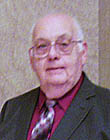|
|
 
|
|
Author
|
Topic: UHF Broadcast Antenna trouble
|
Barry Floyd
Phenomenal Film Handler

Posts: 1079
From: Lebanon, Tennessee, USA
Registered: Mar 2000
|
 posted 07-21-2010 03:59 PM
posted 07-21-2010 03:59 PM





I know a lot of you guys are into radio, so you might be able to help me out.
I have a new "Patron Pager System" at our theatre, identical to the ones you would receive while waiting for a table at a restaurant. They operate on the UHF band at a frequency of 467 MHz. The transmitter came with a small "rubber duckie" style antenna that works fine for a restaurant, but not for a drive-in theatre. What we are doing is taking customers orders for dinner - sending them back to their vehicle with a pager, and when their dinner is ready we buzz their pager to let them know to come pick it up. What we're having problems with is the signal getting out to the cars. I've moved the "rubber duckie" antenna to the end of a 25 ft. 50 ohm cable with BNC connectors up into the attic space of the concessions building, but I think our metal roof system is blocking the signals from getting out to the vehicles. Another problem I think we're having is the metal bodies of the vehicles is also blocking the signal.
The company that makes the pagers sells a 7 foot long external antenna for about $700, but that seems to me like a lot of money for an antenna. I have found some other antennas on the web that are tuned to the same frequency range that the pager transmitter broadcasts in, but didn't know if they would work. Whatever solution we come up with I know it's gonna have to be an externally mounted antenna. What does the "gain rating" say about the antenna. Some are rated at "unity", others have a 3db to 7db gain.
Any clues to make this work? Somebody educate me in antennas...
| IP: Logged
|
|
|
|
|
|
|
|
|
|
John Hawkinson
Film God

Posts: 2273
From: Cambridge, MA, USA
Registered: Feb 2002
|
 posted 07-30-2010 09:53 PM
posted 07-30-2010 09:53 PM




Hey, Barry!
Sorry for not catching your post earlier.
It would help to know a few more things about your set-up. What's the power of the transmitter? [Worst case it should be marked with an FCC ID than you or we can look up.] What's the marking on your coax cable? That'll let us figure out how much power you lose in transmission.
Maximizing reception is about maximizing power output and using the most appropriately directional antenna possible, within the confines of the law.
I assume you've oriented your rubber duck antenna vertically, right? Stick antennas radiate in a circle radially outward from the antenna, not in the direction the stick is pointing. So it should probably be pointed "up." Generally speaking it should be a few wavelengths (1 wavelength is 64cm at 467 MHz) away from anything metal, if you can manage it. Of course, if cars are only to one side of your structure, this might change.
Realistically, the best solution is probably to mount the antenna (and transmitter) out in the middle of the field where the cars are. Of course that might be tough. But you could trot it out there as an experiment one night.
In radio we measure power stuff in dB, or deciBels. They are a confusing unit. One dB is ten times the base-10 logarithm of a power ratio. So a drop from 100 watts to 10 watts is 10/100=0.1, in dB that's 10*log10(0.1) => or -10 dB. A simple doubling (or halving) is 3 dB.
Andy is right that loss in the coax can be significant. Of course you can do better by using better coax. Bigger and thicker is less lossy. The junkiest 50-ohm coax you can find is RG58, which at your frequency loses 10 dB/100 feet, or 2.5 dB for your 25' run, i.e. basically half of your transmit power (ok, fine you drop to 56 percent). If you used something nice like LMR400, you drop to 2.7dB/100ft, or 0.7 dB for your 25' run , or 86% of your power. If you went absolutely crazy (makes no sense in your application) and used 1 5/8" heliax, you could cut it to around 0.1 dB of loss (97%!).
Antenna gain: you have to be careful, because antenna gain is all about comparisons, and different people use different things for comparison. This is usually indicated by the type of dB: such as dBd (dB relative to a dipole antenna, which radiates outward in a plane), dBi (dB relative to an isotropic antenna, which radiates in a sphere), etc.
"Unity gain" means 0 dB, probably 0dBd. Any dipole antenna will have 2 dB of gain over an isotropic antenna, since instead of sending radio waves into the sky, you send them out parallel to the ground.
Anyhow, you can't make up gain without sacrificing something. Usually the answer is you get an antenna that radiates directionally. So it is stronger in those directions than in other directions, hence more gain. This is easy enough when you don't want the people on the moon to get your dinner pager tranmissions, but harder when you're trying to cover a wide area.
But for reasons nobody seems to understand the stock "rubber duck" antennas that come with many RF products seem to just stink. They are typically quarter-wavelength antennas. I don't know how much better you'll do making your own antenna, but it's unlikely to hurt much, so feel free to try. (at least, until you start getting into the tens or hundreds of watts of power, at which point the transmitter starts to care.)
Randy suggests a 2'1/16" length of wire as an antenna. That's...not a good plan. If you use a single length of wire, it should be one quarter of the wavelength, not an entire wavelength. At 467 MHz, a quarter wavelength is 16cm, or 6.3 inches. Though because radio waves travel slower in copper wire than the atmosphere, the theoretically ideal length is usually 5% shorter (depending on the exact wire), or 5.9".
Randy's dipole instructions are fine, though again you ought to account for the velocity factor, so stick with 12.0 inches.
If you follow Kenneth's instructions, the velocity factor in coaxial cable is different...sometimes as low as 0.6 instead of 0.95. Though I guess I'm not sure how that works when you start stripping the braid around... Still, it's going to be a foot or less.
Probably the best tool for testing this stuff is a receiver that operates on your frequency. If you're lucky you'll be able to find a portable VHF radio or scanner that can tune to your exact frequency and then you can hear your data transmissions. Then you can walk around and see how effective your antenna is and what kind of coverage you have. Try asking a local ham.
Which brings up another point -- a lot might depend on what else is on your frequency, or even nearby frequencies. I guess you're in a fairly rural area, so the liklihood of interference from other devices isn't anywhere near as high as it is for us city folk. Still, you never know.
Looks like two of your neighbors at 1726 Linwood are hams. Perhaps you could knock on their door with some movie passes and ask if you could borrow one of them with a receiver.
Best of luck and let us know how it goes!
--jhawk
| IP: Logged
|
|
|
|
|
|
|
|
|
|
|
|
|
|
|
|
All times are Central (GMT -6:00)
|
|
Powered by Infopop Corporation
UBB.classicTM
6.3.1.2
The Film-Tech Forums are designed for various members related to the cinema industry to express their opinions, viewpoints and testimonials on various products, services and events based upon speculation, personal knowledge and factual information through use, therefore all views represented here allow no liability upon the publishers of this web site and the owners of said views assume no liability for any ill will resulting from these postings. The posts made here are for educational as well as entertainment purposes and as such anyone viewing this portion of the website must accept these views as statements of the author of that opinion
and agrees to release the authors from any and all liability.
|

 Home
Home
 Products
Products
 Store
Store
 Forum
Forum
 Warehouse
Warehouse
 Contact Us
Contact Us




 Printer-friendly view of this topic
Printer-friendly view of this topic








![[Wink]](wink.gif)







